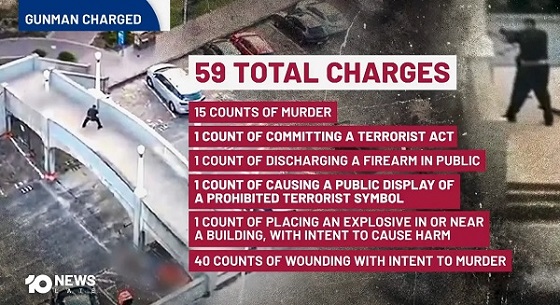International
Pope Leo XIV meets with JD Vance, Marco Rubio following pontiff’s opening Mass

From LifeSiteNews
Vice President J.D. Vance, a Catholic, presented the new pontiff with a letter from President Trump inviting him to the White House, and a Chicago Bears jersey bearing the pontiff’s name.
Pope Leo XIV held a private audience with U.S. Vice President J.D. Vance, who led an official American delegation to the Vatican for the pontiff’s inauguration Mass.
Leo XIV held the Monday morning meeting with Vance and Secretary of State Marco Rubio, both of whom are Catholic, just one day after the pontiff’s opening Mass in St. Peter’s Square. The officials discussed collaboration between Church and state, religious freedom, and ongoing international conflicts, per the Vatican.
Vance also presented the new pontiff with a letter from President Donald Trump inviting him to the White House, and a Chicago Bears jersey bearing the pontiff’s name and the number “XIV.”
Pope Leo XIV holds a private audience with US Vice President @JDVance and Secretary of State Marco Rubio @SecRubio, who attended the Inauguration Mass of his pontificate on Sunday at the Vatican.
— Catholics for Catholics 🇺🇲 (@CforCatholics) May 19, 2025
“This morning, Monday, 19 May 2025, His Holiness Leo XIV received in audience the Vice President of the United States of America, the Honorable James David Vance, who subsequently met with His Excellency Archbishop Paul Richard Gallagher, Secretary for Relations with States and International Organizations,” the Vatican said in a statement.
The Vatican noted that the discussion was cordial and emphasized that various issues, such as collaboration between Church and state, religious freedom, as well as international and humanitarian issues, were discussed.
“During the cordial talks held at the Secretariat of State, satisfaction was once again expressed at the existing good bilateral relations, and the collaboration between Church and State was discussed, as well as some matters of special relevance to ecclesial life and religious freedom,” the Vatican said.
“Finally, there was an exchange of views on some current international issues, during which hope was expressed that humanitarian law and international law be respected in areas of conflict and that there be a negotiated solution between the parties involved,” they added.
“I was humbled and honored to meet Pope Leo XIV and lead the presidential delegation to Rome for his inaugural address. We had a great conversation, and I know he is a true servant of God. I hope all Americans will join me in praying for the new pope as he begins his ministry,” Vance wrote in an X post following the audience.
Vance is the second Catholic to serve in his position as vice president of the U.S. – though the first convert – but even more notable is that Leo XIV is the first pope to come from North America. Leo XIV was raised in Chicago, though spent much of his missionary life as a priest and bishop in Peru.
Prior to being elected pope, Leo XIV appeared to share views opposed to those of Vance on the issue of immigration.
In one instance on X from February 3, then-Cardinal Robert Prevost reposted an article by NCROnline titled “JD Vance is wrong: Jesus doesn’t ask us to rank our love for others.”
The article criticized the vice president for arguing that citizens owe more immediate responsibility to one’s own family members and country than to those overseas – a position taught by St. Thomas Aquinas and reiterated in the “social encyclicals” of the 19th- and 20th-century popes.
Rubio echoed Vance’s sentiments about the honor of meeting with Pope Leo XIV in an X post.
“May the Lord and our Blessed Mother bless and guide, [Pope Leo XIV],” he wrote.
Jeanette and I were honored to join @VP and @SLOTUS during today's audience with His Holiness Pope Leo XIV.
May the Lord and our Blessed Mother bless and guide @Pontifex. pic.twitter.com/7PbllZ6rs8
— Secretary Marco Rubio (@SecRubio) May 19, 2025
Last week, Rubio discussed the new pontiff’s previous comments about the Trump administration’s immigration policies with reporters, stressing that they are not incompatible with the pontiff’s sentiments about showing compassion for migrants.
“We too are compassionate towards migrants; I would argue there’s nothing compassionate about mass migration,” the secretary of state said. “There’s nothing compassionate about open borders, that allows people to be trafficked here. There’s nothing compassionate … to the American people about flooding our country with individuals that are criminals and prey on our communities.”
As an American, Leo XIV’s relationship with the Trump administration on a number of issues, such as immigration, pro-life topics, and “climate change” policies, will be key to observe in order to help determine his own policies as pope.
Business
Warning Canada: China’s Economic Miracle Was Built on Mass Displacement

If you think the CCP will treat foreigners better than its own people, when it extends its power over you, please think again: Dimon Liu’s warning to Canadian Parliament.
Editor’s Note: The Bureau is publishing the following testimony to Canada’s House of Commons committee on International Human Rights from Dimon Liu, a China-born, Washington, D.C.-based democracy advocate who testified in Parliament on December 8, 2025, about the human cost of China’s economic rise. Submitted to The Bureau as an op-ed, Liu’s testimony argues that the Canadian government should tighten scrutiny of high-risk trade and investment, and ensure Canada’s foreign policy does not inadvertently reward coercion. Liu also warns that the Chinese Communist Party could gain leverage over Canadians and treat them as it has done to its own subjugated population—an implied message to Prime Minister Mark Carney, who has pledged to engage China as a strategic partner without making that position clear to Canadians during his election campaign.
OTTAWA — It is an honor to speak before you at the Canadian Parliament.
My testimony will attempt to explain why China’s economic success is built on the backs of the largest number of displaced persons in human history.
It is estimated that these displaced individuals range between 300 to 400 million — it is equivalent to the total population of the United States being uprooted and forced to relocate. These displaced persons are invisible to the world, their sufferings unnoticed, their plights ignored.
In 1978, when economic reform began, China’s GDP was $150 billion USD.
In 2000, when China joined the WTO, it was approximately $1.2 trillion USD.
China’s current GDP is approximately $18 trillion USD.
In 2000 China’s manufacturing output was smaller than Italy’s.
Today it’s larger than America, Europe, Japan, and South Korea combined.
If you have ever wondered how China managed to grow so fast in such a short time, Charles Li, former CEO of the Hong Kong Stock Exchange, has the answers for you.
He listed 4 reasons: 1) cheapest land, 2) cheapest labor, 3) cheapest capital, and 4) disregard of environmental costs.
“The cheapest land” because the CCP government took the land from the farmers at little to no compensation.
“The cheapest labor,” because these farmers, without land to farm, were forced to find work in urban areas at very low wages.
The communist household registration system (hukou 戶口) ties them perpetually to the rural areas. This means they are not legal residents, and cannot receive social benefits that legal urban residents are entitled. They could be evicted at any time.
One well known incident of eviction occurred in November 2017. Cai Qi, now the second most powerful man in China after Xi Jinping, was a municipal official in Beijing. He evicted tens of thousands into Beijing’s harsh winter, with only days, or just moments of notice. Cai Qi made famous a term, “low-end population” (低端人口), and exposed CCP’s contempt of rural migrants it treats as second class citizens.
These displaced migrant workers have one tradition they hold dear — it is to reunite with their families during the Chinese Lunar New Year holiday, making this seasonal migration of 100 to 150 million people a spectacular event. In China’s economic winter of 2025 with waves of bankruptcies and factory closures, the tide of unemployed migrant workers returning home to where there is also no work, and no land to farm, has become a worrisome event.
Historically in the last 2,000 years, social instability has caused the collapse of many ruling regimes in China.
“The cheapest capital” is acquired through predatory banking practices, and through the stock markets, first to rake in the savings of the Chinese people; and later international investments by listing opaque, and state owned enterprises in leading stock markets around the world.
“A disregard of environmental costs” is a hallmark of China’s industrialization. The land is poisoned, so is the water; and China produces one-third of all global greenhouse gases.
Chinese Communist officials often laud their system as superior. The essayist Qin Hui has written that the Chinese communist government enjoys a human rights abuse advantage. This is true. By abusing its own people so brutally, the CCP regime has created an image of success, which will prove to be a mirage.
If you think the CCP will treat foreigners better than its own people, when it extends its power over you, please think again.
The Bureau is a reader-supported publication.
To receive new posts and support my work, consider becoming a free or paid subscriber.
Artificial Intelligence
UK Police Pilot AI System to Track “Suspicious” Driver Journeys
AI-driven surveillance is shifting from spotting suspects to mapping ordinary life, turning everyday travel into a stream of behavioral data
|
|
-

 Energy2 days ago
Energy2 days agoCanada’s sudden rediscovery of energy ambition has been greeted with a familiar charge: hypocrisy
-

 Business2 days ago
Business2 days agoOttawa Pretends To Pivot But Keeps Spending Like Trudeau
-

 Agriculture15 hours ago
Agriculture15 hours agoWhy is Canada paying for dairy ‘losses’ during a boom?
-

 Daily Caller2 days ago
Daily Caller2 days agoParis Climate Deal Now Decade-Old Disaster
-

 Automotive1 day ago
Automotive1 day agoFord’s EV Fiasco Fallout Hits Hard
-

 Censorship Industrial Complex2 days ago
Censorship Industrial Complex2 days agoHow Wikipedia Got Captured: Leftist Editors & Foreign Influence On Internet’s Biggest Source of Info
-

 Crime2 days ago
Crime2 days agoThe Uncomfortable Demographics of Islamist Bloodshed—and Why “Islamophobia” Deflection Increases the Threat
-

 Alberta16 hours ago
Alberta16 hours agoAlberta’s new diagnostic policy appears to meet standard for Canada Health Act compliance









